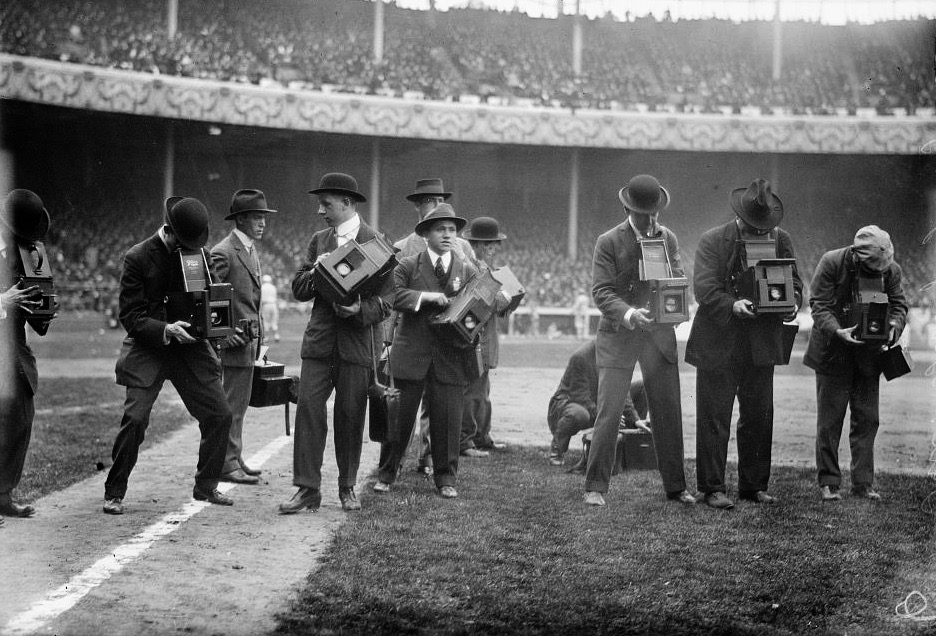The Socony Ad
It’s Friday morning, July 21st, 1922.
The forecast calls for 74 and cloudy.
You’re flipping through the New York Tribune and — how ’bout that! — George Sisler is still hitting .413.
Hornsby with his 26th home run.
A man from South Carolina tried to — what? — jump off the Williamsburg Bridge? Some patrolmen grabbed him.
Otis Elevator closed at $133 3/4. No, you shouldn’t have sold yours at $120.
Maybe a play later? “Captain Applejack” is at the Cort on 48th.
Better avoid Jane Street. That warehouse is still on fire.
Two thousand years old? What? It says here they found a 2,000 year-old statue at Mr. Untermyer’s place in Yonkers? Geez.
SOCONY GASOLINE. ALWAYS DEPENDABLE. ACCESSIBLE EVERYWHERE. You pause to examine the two-page ad.
It’s huge. And under the auspicious bold type that blares out WHERE SOCONY GASOLINE CAN BE OBTAINED, there’s a list of thousands of garages across the five boroughs that specifically carry Socony. In the upper left hand corner of the first page of the ad, a sketch of Columbus Circle is captioned with
FIRST — AT COLUMBUS CIRCLE — At Columbus Circle, New York, the busiest motor traffic center in the world, 544 motorists, taken at random, were asked recently which gasoline they preferred. The count, duly sworn to by the investigators, showed that the big majority preferred and used Socony. And all through New York State and New England Socony stands out as the popular choice.
But there’s something about “Socony” you just can’t place. It feels like an acronym.
You reach the bottom of the ad and, sure enough, finally get the cipher. There’s an imposing name and address. It hits you like a wall of Indiana limestone: STANDARD OIL CO. OF NEW YORK. 26 BROADWAY.
Their ads get larger every day.
******
A Little Socony Background
Back in 1915, the National Petroleum News [“New York Auto Filling Stations Lack Style,” March 1915] figured New York was home to some 75,000 cars. It reported that “about 74,800” were kept in public garages and “the majority” were managed by “hired chauffeurs.” Now the chauffeurs were responsible for buying gasoline, but had to navigate an increasingly deceptive marketplace to find it.
For example, because all gas entering the city was distributed in barrels instead of tanks, the industry was rife with bad product. The Petroleum News noted that dishonest dealers wouldn’t sell their chauffeur clientele “straight, distilled, or homogenous gasoline,” but rather “blending establishments consisting of two drums of naphtha and one of gasoline.” In other words, they passed off diluted goods as the real thing. One of the brand names they messed with was Socony, and it wasn’t long before that company’s executives took action.
When Standard Oil was dissolved in 1911, it was split up into 34 new companies. One of them was the Standard Oil Company of New York, otherwise known as Socony. As early as September 1914, Socony launched a program to “certify” its dealers in Manhattan. Only those that sold undiluted mixtures of its product were permitted to post its red, white, and blue logo on their premises. The dealers also had to quit offering their customers competing brands. But what did they get for these unusual concessions? Well, Socony gave them publicity — reams of priceless publicity.
Because most chauffeurs were leery of fraud, Socony decided to connect them to its newly-minted “conscientious dealers,” those it endorsed for selling “real” products. The company began its campaign by placing full page ads “in all the leading papers.” Initially, it only published the names and addresses of its dealers in Manhattan, but quickly expanded to include those in the Bronx, Brooklyn, Queens, and on Staten Island. According to Petroleum News, “after about ten days or two weeks of this pounding, the advertising began to have an effect.” More and more dealers hurried to set up exclusive relationships with Socony. They noticed an increase in business after they did too.
Meanwhile, alerted to a brand they could finally trust, the chauffeurs and other independent drivers began asking for “straight run gasoline, particularly Socony” at their usual spots. If a retailer didn’t carry it, they moved on. Every week, Standard revised its list of Socony dealers, so the ads got noticeably longer in the weekend editions of both the local and national newspapers. The one described in the Tribune above is overwhelming. It appears as if every gas station and garage in the city had partnered with Socony.
Perhaps that strategy laid the foundation of its survival. After all, Socony is still with us. In 1931, it merged with Vacuum Oil to become Socony-Vaccum. Twenty-four years later, Socony-Vacuum joined forces with Mobil Oil to form the Socony-Mobil Oil Company. In 1963, the hyphenated part was dropped in favor of simply Mobil Oil. Finally, in 1999, Mobil united with Exxon, another remnant of Standard Oil once called the Standard Oil Company of New Jersey. Together, they produced ExxonMobil — the largest purveyor of gas and oil in the world today.
Image:
A sketch of Columbus Circle looking south toward Broadway. The image was on a full-page ad for Socony gas that appeared in the New York Tribune on July 21, 1922.
Screenshot by Rick Stachura. Courtesy of Thomas Tryniski at fultonhistory.com.
Fun Fact (Image):
Both the building on the left — 1709 Broadway (erected 1911) — and building on the right — 250 West 57th Street (erected 1921) — are still standing.
Fun Fact (News):
The news and other items referenced under “The Socony Ad” were actually reported in the Tribune on July 21, 1922.

